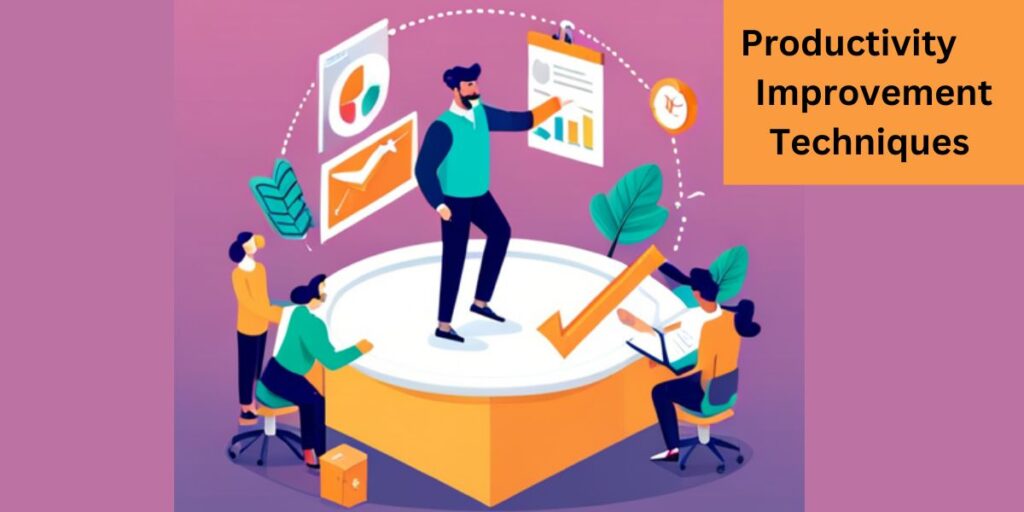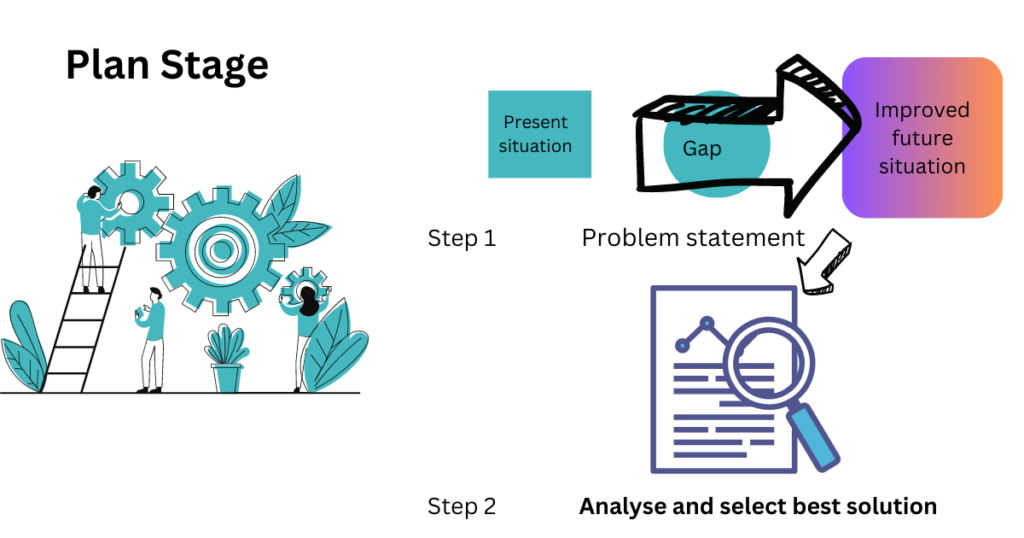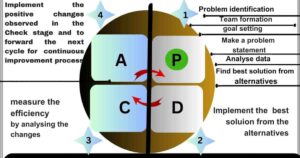

Productivity improvement is crucial for success in both service and manufacturing sectors. Strategies like PDCA cycle, Kaizen 5s, for continuous improvement, Lean manufacturing, setting SMART goals and motivation can optimize processes and increase efficiency. Customizing efficiency enhancement techniques for each sector leads to improved customer satisfaction, increased competitiveness, and higher profitability. Service and manufacturing organizations can achieve long-term success by focusing on optimization, innovation, and fostering a culture of efficiency. This article explores various Productivity Improvement Techniques for Workplace
PDSA cycle for quality improvement
PDSA (PDCA) cycle is a frame work developed by Schewart and Deming for the continuous improvement of Process in manufacturing industries. This is a team problem solving method by brain storming the team members and getting solutions for the complaints obtained from consumers. PDSA cycle can be used everywhere for process improvements such as Hospitals, Educational Institutions.
” PDCA cycle adapts Process approach where processes have the characteristics of continuous improvement and this method is followed in ISO system “
PDCA consists of 4 steps,
Plan — Do — Study (check) — Act.
Plan: Determine the issue, gather information, and formulate hypothesis for the root cause of the problem.
Do: Execute the hypothesis and conduct a small-scale test of it.
Check: Evaluate the test outcomes to ascertain whether the hypothesis was correct.
Act: If the hypothesis was right, implement the solution on a larger scale. If not right, go back to the planning stage and develop a new hypothesis.
Tools and techniques to apply : Brainstorming , using the format of 5W & 1 H (What, Where, when, why , who, and How),Flow diagram , Swim lane diagram, Check sheets for collecting data, Pareto diagrams ,Fish bone diagram, Histogram etc.,
Plan stage: In plan stage there are 2 steps
-
Step 1 consists of Problem identification, team formation, goal setting and analysing using SMART method, the output of step one is a problem statement which shows the present situation, gap and the future with the required improvement.
-
Second step consists of thorough analysis and finding best solution from the alternatives

-
Do stage consists of implementing the best solution from the alternatives
-
Check (Study) stage is to measure the efficiency by analysing the changes and identifying all positives and negatives
-
Act stage consist of implementing the positive changes observed in the Check stage and to forward the next cycle for the continuous improvement process
Kaizen 5S
KAIZEN is practical approach of PDCA cycle and a team problem solving method started in Japan. It consists of continuous improvements in small increments by the combined effort of team of employees. Kaizen continuous improvement philosophy is extendable to the personal life of employees also.
Kaizen and lean manufacturing
Lean Manufacturing is based on Kaizen and concentrate on waste elimination, higher productivity and continuous process improvement
Various techniques under Kaizen are:
5s, Muda, Mura and Muri, Poka-Yoke, Gemba walk etc.
5S for work place improvements
- Sort: Eliminate waste which is not needed by providing them with red tags
- Straighten: Organize and put all necessary items in the optimal place
- Shine: Clean and inspect the work area.
- Standardize: Write standards for 5S.
- Sustain: Consistently apply the 5S standards.
MUDA refers to non-value adding activities or 7 wastes which must be eliminated.
| Types of waste | Examples | |
| 1 | Over production | Due to insufficient production planning ,scheduling |
| 2 | Over processing | Lack of implementation of Quality by design |
| 3 | Waiting (Delay) | Equipment break down, waiting for tools, raw materials |
| 4 | Defects | Defective items produced |
| 5 | Inventory | Excess of unnecessary inventory |
| 6 | Wasted motion | Tools and raw materials are not provided at the allotted spaces |
| 7 | Unnecessary transportation | In efficient transportation system |
Mura referrers to the unevenness in production or services in the absence of standardisation
Muri refers to the overburden due to planning problems.
Poka –Yoke is a mistake proofing method to eliminate defects or accidents and are suitable for implementing In Quality by design (Concurrent ) engineering method where all factors such as quality,reliability,marketability are considered in advance using techniques such as design Failure Mode Effect Analysis (DFMEA)
Gemba walk:
A term to convert workplace to the most happening place. In Lean manufacturing Gemba walk is a term used to visit the work floor to see the actual practice and to get complaints, feedbacks for continuous improvement process. Some of the important steps in Gemba walk are:
Select the team and train them for continuous improvement
Give priority to process rather than people
Elimination of waste for process improvement
Observe the problems first and action must be taken afterwards only
Get the help of people from other dept. also during Gemba walk
Inform team members about minute details observed also.
Productivity Improvement Techniques for Workplace
Demand and capacity management: It is feasible to minimise excess or understaffing, which can result in lost productivity, by anticipating peak times and staffing correctly.
Upskilling the workforce: This involves giving staff opportunities for training and growth, giving regular performance reviews, and making sure to recognise their accomplishments when productivity targets are met.
Utilise technology: task management, scheduling, and customer relationship management (CRM) software are a few examples of software tools that can help you increase productivity.
Continuous improvement: By encouraging suggestions from staff members for ways to boost productivity, it is feasible to foster a culture of innovation.
Employees can concentrate on more value-added activities by automating repetitive operations and developing self-service options.
Some Tools for Productivity Improvement in Manufacturing
Enterprise Resource Planning systems (ERP): Helps to integrate all aspects of a manufacturing business
Manufacturing Execution systems (MES): For optimization of production processes and also to collect data in real time.
Simulation software: To simulate manufacturing processes before commencing production. This can help to identify potential problems and improve efficiency.
Augmented reality (AR): This can be helpful for manufacturing businesses in a number of ways, such as providing instructions to workers, tracking inventory, and identifying potential problems.
Lean manufacturing tools: To identify and eliminate waste in their production processes.
Conclusion
Adopting the PDSA cycle equips businesses to promote continuous development, In the service industry, increasing efficiency involves providing high-quality services in less time through personnel skills, technology, and workflow optimization. In the manufacturing sector, increasing output while reducing expenses and waste requires lean manufacturing practices, automation investments, and continuous improvement. By implementing some of these technique it is possible to achieve business goals more quickly and efficiently.
What are the 3 components to productivity improvement?
What are the 4 strategies for improving productivity in service ?
What are the five factors that improve productivity?
What are 3 causes of improved productivity?
